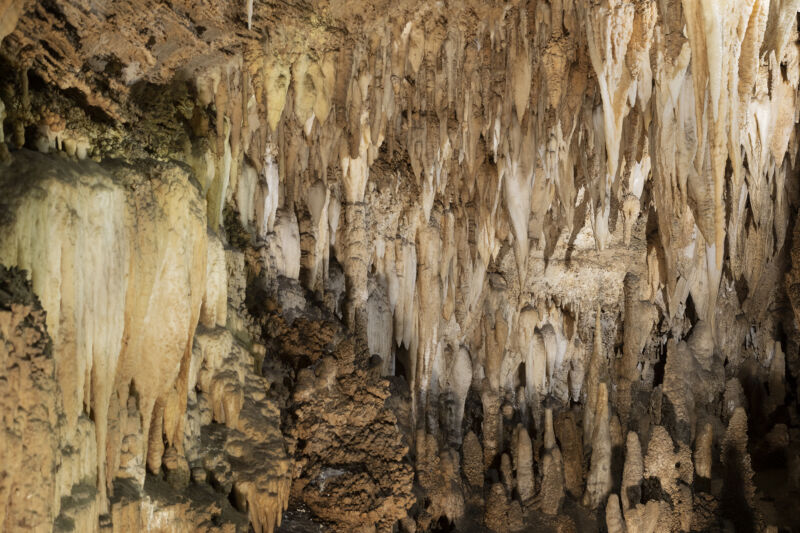Italian cave makes sense of the change in Earth’s ice age rhythm

Enlarge / A mass of stalactites in Italy's Corchia Cave, where the new record comes from. (credit: Linda Tegg)
The general outlines of the ice ages of the last several million years are pretty well understood. The timing of the glacial cycles has been controlled by cycles in Earth's orbit, with the temperature swings amplified by feedbacks in the Earth system via raised and lowered greenhouse gas concentrations. But having a general outline doesn't mean there aren't interesting questions within that big picture.
Some of those questions relate to a remarkable change in the ice age rhythm that occurred around a million years ago. Prior to this transition, the glacial cycles came and went on a roughly 41,000-year beat. This matches a cyclical pattern that changes the tilt of Earth's rotational axis, strengthening and weakening the contrast between summer and winter. But after the transition, glacial cycles stretched out to about 100,000 years. That's roughly the same length as a cycle that alters the shape of Earth's orbit around the Sun.
The latter cycle is known to be too weak to really run the show. But there's a third influence: a roughly 23,000-year "precession" cycle that changes which section of Earth's orbit each season occurs in. So what combination of these cycles explains the 100,000 year-heartbeat? And how could something suddenly take over tilt's dominant role in the previous 41,000-year heartbeat?
Read 9 remaining paragraphs | Comments